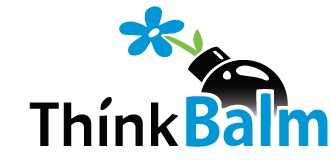- in Blog Articles by Sam Driver
To cross the chasm, we must close the language gap
One of the themes of the 3DTLC conference last week was language. This was a recurring topic from the April, 2009 3DTLC conference, but the focus has shifted. Half a year ago the discussion was about whether we should use the term “virtual worlds” or something else. Last week, it became clear from the presentations and conversations that the next wave of adopters — the pragmatists — speak a different language from the early adopters. This language gap is a barrier to adoption of immersive technologies in the workplace; it’s a facet of facing “the chasm,” to use the terminology of Geoffrey Moore (see the book, Crossing the Chasm). (For more insights on how to overcome barriers to adoption see the Sept. 23, 2009 ThinkBalm report, Crossing the Chasm, One Implementation at a Time.)
Immersive Internet technology marketers, advocates, and implementers who are successful at closing this language gap will be competitively positioned to cross the chasm. The way to accomplish this is to speak the vernacular of target business sponsors, stakeholders, and users. As an example, Kevyn Renner, senior technology consultant at Chevron, said it well in his presentation at 3DTLC. When talking with people about the refinery asset virtual environment (“RAVE”) his team is piloting, he describes it using the terminology of the oil refinery — not Web 2.0 or 3D Internet language.
While Kevyn’s example is industry-specific, we can also change the way we talk about immersive technologies in a generalized way. The words we use should convey what people at work can do with the technology, more than describe the technology itself. For example, when talking with business decision makers we use the term email, not SMTP traffic crossing the Internet. We talk about instant messaging, not real-time extensible communication protocols. Likewise, to successfully communicate about immersive technologies to pragmatists we should be talking about collaboration spaces, operations centers, and building blocks rather than virtual worlds and prims.
Below, we offer suggestions to serve as a starting point for discussion. Included are generic terms intended to appeal to business decision makers. We recommend leaving behind terminology that commonly draws negative associations and words that arose out of science fiction. Of course, if your audience is in IT, it’s okay to talk tech — but remember that even IT pros will not likely be familiar with virtual worlds-specific terms. If your audience is a hospital administrator, HR manager, or sales manager, speak the language of their business and job function. In the end, the specific language you choose should depend on your target audience.
Immersive Internet terminology map
| Terms to avoid | Suggested alternatives |
|
|
| Virtual (when used in opposition to “real”) |
|
|
Clerk, doctor, officer, customer, or whatever role the non-player character /AI / bot in the environment represents. |
| Prim |
|
| Texture (when used to describe an uploaded image) |
|
| In-world |
|
|
|
|
|
| Terraform |
|
| Rez |
|
| Teleport (“TP”) |
|
| Machinima | Video |
[1] For more information about the concept of a bridge (based on the bridge on a ship) see the August 14, 2009 ThinkBalm Innovation Community video “The Bridge.”
